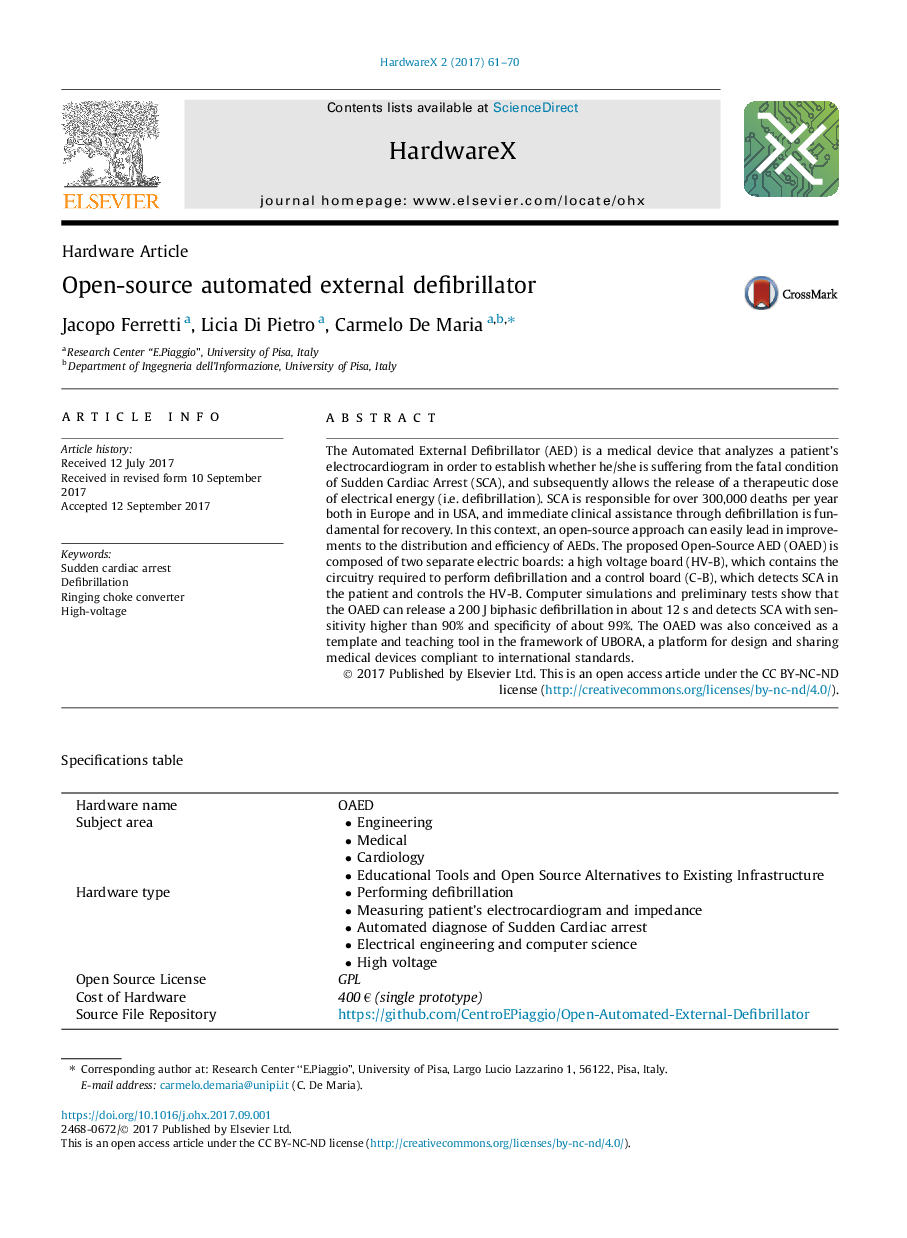| Article ID | Journal | Published Year | Pages | File Type |
|---|---|---|---|---|
| 5788484 | HardwareX | 2017 | 10 Pages |
The Automated External Defibrillator (AED) is a medical device that analyzes a patient's electrocardiogram in order to establish whether he/she is suffering from the fatal condition of Sudden Cardiac Arrest (SCA), and subsequently allows the release of a therapeutic dose of electrical energy (i.e. defibrillation). SCA is responsible for over 300,000 deaths per year both in Europe and in USA, and immediate clinical assistance through defibrillation is fundamental for recovery. In this context, an open-source approach can easily lead in improvements to the distribution and efficiency of AEDs. The proposed Open-Source AED (OAED) is composed of two separate electric boards: a high voltage board (HV-B), which contains the circuitry required to perform defibrillation and a control board (C-B), which detects SCA in the patient and controls the HV-B. Computer simulations and preliminary tests show that the OAED can release a 200Â J biphasic defibrillation in about 12Â s and detects SCA with sensitivity higher than 90% and specificity of about 99%. The OAED was also conceived as a template and teaching tool in the framework of UBORA, a platform for design and sharing medical devices compliant to international standards.
Graphical abstractDownload high-res image (87KB)Download full-size image
